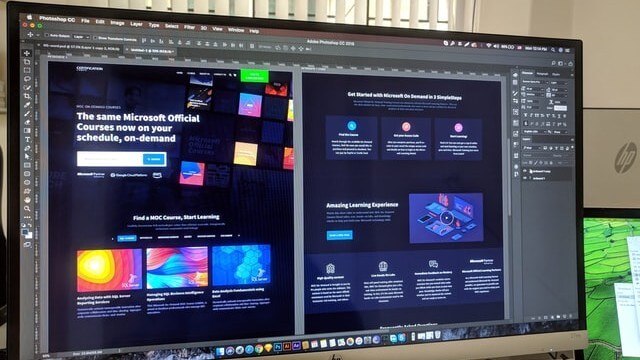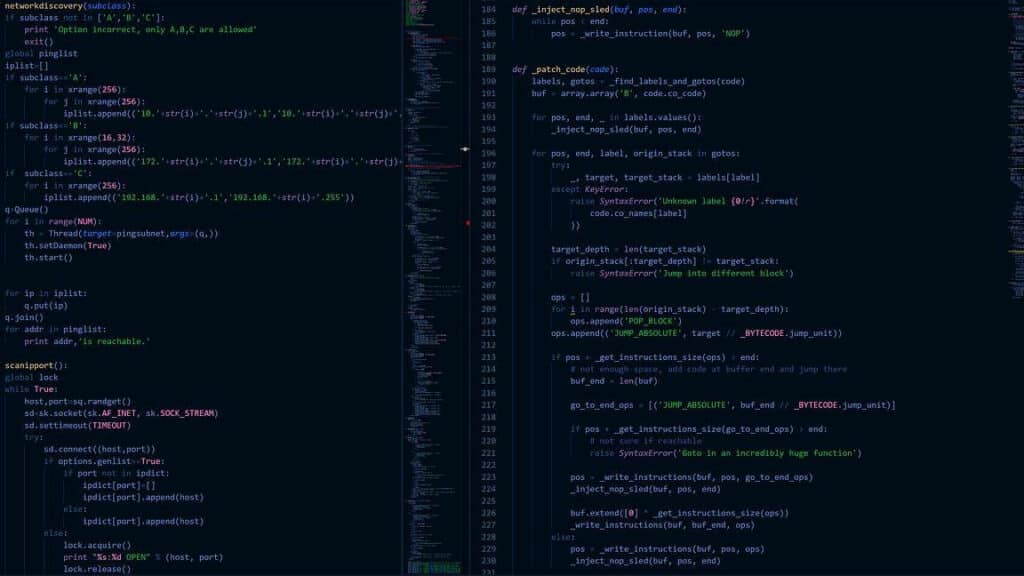Hello, welcome to another inspiring piece on Back-End Developer Languages!
In this article, we will look at various Back-End Developer Languages and the related frameworks.
At the end of this piece, you will better understand the features of top Back-End Developer Languages and useful resources for learning these languages.
This article will discuss the following:
- Back-End Developer Languages – Overview
- Top Back-End Developer Language
- Top Back-End Developer Frameworks
- Top Learning resources
Let’s continue!
Back-End Developer Languages – Overview

The Software Development landscape is ever-evolving, and staying abreast of the most recent changes is simply one aspect of the task.
The other side of that challenge is being aware of what it is that you ought to be staying current on.
To the same extent that our brains can comprehend and absorb certain languages that we have picked up throughout our lives, so is the brain of a computer able to do the same.
It can process sets of commands in some languages after first breaking them down into sets of commands.

A programming language can translate into a sequence of commands.
For the computer to process them, these must be utilized with the appropriate compilers and syntax.
Writing application programming interfaces (APIs), writing code to connect with a database, writing code to create libraries, and many more are potential responsibilities of Back-End Programmers.
The use of one or more programming languages, mostly at a level of reasonable knowledge, is required of Back-End Developers.
Back-End Development Language Types

Both object-oriented and functional programming styles are Back-End programming options.
OOP is an acronym for “object-oriented programming,” and it refers to a programming style that emphasizes the production of objects.
When using object-oriented programming, the statements need to be carried out in a specific sequence.
Among the most common OOP languages are .Net, Java, and Python.
A method that is more “action”-based is known as functional Back-End programming.
A declarative language is utilized in functional programming, which means that statements may execute in any particular order.
In data science, F#, SQL, and R are some of the major programming languages.
The first method is more rigid, but it is better at catching errors; the second method, however, is more flexible, but it permits variables to change types, which could account for problems that are not intended.
Top Back-End Developer Language
You can do Back-End programming in various languages, and Developers can choose from them.
The programming languages JavaScript, Python, and PHP are at the top of the lists of most extensively used and approved languages.
One of the Back-End Languages that has had the greatest growth in popularity in the past is JavaScript.
Because it is a scripting language, it enables developers to create client-side and Back-End with the same syntax, drastically lowering the amount of work needed.
PHP is a server-side scripting language that you can use to develop command-line scripting and even desktop programs.

It is a language that you can learn relatively quickly and easily.
You can use Python for websites and desktop applications.
Moreover, in comparison to the grammar of other Back-End Developer Languages, its syntax is straightforward and straightforward to learn.
However, in addition to these three languages, Back-End Developers also make use of several other excellent languages, such as the following:
Ruby
Ruby is a Web Development Language constructed on top of the Ruby programming language.
Ruby comes with various tools that simplify the process of developing fundamental responsibilities.
Ruby requires very minimal work to be done on the back-end, which enables Developers to construct and launch new apps rapidly.
Its functionalities are similar to Python’s because it is an excellent prototype language.
Ruby was developed using the C programming language and is compatible with various operating systems and platforms, including Windows, Linux, Mac OS, and Unix.
Consequently, Ruby’s popularity skyrocketed in the early 2000s but has steadily decreased.
Ruby is a freely modifiable open-source programming language; thus, it can be expanded upon and adjusted as needed.
Goland/Go
Still, it also offers memory safety, garbage collection, and several other characteristics, making it an excellent language for Back-End programming.
In addition, it makes the code more readable than C, similar to Python or JS.
Because Go’s compiler can convert the source code to machine code, it is a very efficient language for Back-End Development.
In addition to that, it has a function that makes the process of identifying bugs much less complicated.
It is useful in the construction of online apps, as well as in Server-side development, Cloud-native development, and machine learning application development.
C#
C# is a high-level programming language that quickly adapts to run on various computer platforms.
This potent programming language, along with other frameworks like Microsoft’s .NET, is used by Programmers to build the internal structure of webpages and integrate client interactions with web server automation and interactions to create completely functional software.
Because of its flexibility and consistency, C# and its associated frameworks are dependable for constructing websites and applications.
Since C# is quite similar to the programming languages C and C++, which are both important for Back-End Development, you may find it easier to learn C# if you already have some experience with the fundamentals of these languages.
On the other hand, C# error-proof commands make it very simple for even inexperienced Programmers to quickly grab the knowledge of the language by highlighting potential problems with a program before it is ever put through its paces for testing.
Before moving on to a language with more complex syntax, you could find it useful to study Back-End Development using this method and finish projects on your own.
Rust
Rust was developed to provide high performance comparable to C and C++, emphasizing code safety; the absence of which is the flaw of these two languages.
Rust, on the other hand, has several other advantages besides the memory safety it provides.
Other reasons why well-known software heavyweights are now using this programming language include its high performance while processing big volumes of data, its support for concurrent programming, and the fact that it comes with an efficient compiler.
Rust is a production-ready Full Stack Development language utilized by various businesses, ranging from fledgling startups to multinational conglomerates, including Firefox, Dropbox, and Cloudflare.
Kotlin
Kotlin is what’s known as a general-purpose programming language, which means it has the potential to be utilized in a wide range of contexts.
Kotlin is typically employed in developing for many platforms simultaneously, such as mobile apps, desktop, and server-side platforms.
The designers of the programming language Kotlin advise Developers to construct applications in stages, beginning with a single module or feature, testing it, and then going on to other components of the application.
Kotlin separates the business logic from the user interface, enabling Developers to make their apps look and feel completely native.

The programming language enables Developers to modify previously created code and utilize it on iOS.
Because Kotlin can be executed on a virtual machine, you can write code in Kotlin and then utilize its compilers to convert it to another language once it has been created.
Kotlin is a programming language that you may use for more than just mobile application development.
The language is utilized in the construction of Android and server-side applications.
Numerous businesses, including Hexagon, Google, Gradle, and many others, are already using this strategy in their operations.
Perl
Perl is a general-purpose programming language initially developed for text manipulation.
These days, however, it is used for a wide variety of activities, such as system administration, web development, network programming, and GUI development, amongst other things.
Perl is a reliable programming language that can run on multiple platforms and is used for projects of the utmost importance in both the public and private sectors.
Both procedural and object-oriented programming paradigms are supported in Perl.
Because Perl is an interpreted language, your code can run in its current form without the need for a compilation stage, which produces an executable program that is not portable.
Compilers of yesteryear were responsible for the translation of programs into machine code.
When you run a program written in Perl, the program is initially compiled into a byte code, and then that byte code is transformed into machine instructions.
Top Back-End Developer Frameworks

A software framework is a basis for application Developers to build software; it is a quicker and more standardized method.
A framework’s primary purpose is to automate the overhead associated with tasks connected to software engineering.
Scalability, robustness, security, and integration are among the primary benefits of utilizing a framework during development.
In addition to this, the majority of the frameworks make use of open-source software.
The following are examples of some of the most popular Back-End Development Frameworks:
Django
Django is a prominent example of an open-source Back-End Framework built on the Python programming language and adheres to the model view controller (MVC) architecture.
Django is one of the most user-friendly Back End Frameworks, and it is well suited for creating database-driven websites that are complex and abundant in features.
It is generally agreed that Django is one of the greatest Back-End Web Development Frameworks available.
This Back-End Framework allows for full implementation, with fewer lines of code, increased reusability, and quicker development.
Python is used for all of Django’s activities, and it offers an optional admin interface to assist with processes like creating, reading, updating, and deleting content.
Django is a web application framework used by many well-known websites, including Mozilla and Disqus.
Laravel
This framework is an open-source PHP web framework that Programmers use to develop Symfony-based web applications that adhere to the model–view–controller (MVC) architectural design.
It provides a customizable packaging system that a specialized dependency manager accompanies.
It has been determined that Laravel is one of the best web frameworks available.

In addition, many industry professionals believe this technology represents the most effective software for Back-End Development.
In addition, Laravel gives its customers several other avenues by which they can access relational databases and utilities for application maintenance and deployment.
The source code for Laravel can be seen on GitHub, and the software is distributed under an MIT license.
Express JS
This framework for building web applications with Node.js is open-source software.
It is licensed under the MIT open-source software license.
It is a common Node.js server framework for constructing application programming interfaces (APIs) and web applications.
Along with the Angular JS frontend framework and NoSQL databases, Express is a part of the MEAN stack that manages Back-End functionality.
Express is often considered among the most effective frameworks for online application development.
Express.js is a framework that offers many of the functionalities that are utilized most frequently in Node.js.
Instead of creating large amounts of code, Developers working with Express JS may easily and immediately incorporate just a few lines of code.
Creating web applications using Express is significantly quicker than developing using Node.js solely.
CakePHP
CakePHP is a popular open-source web framework written in PHP and utilizes the Model-View-Controller (MVC) architecture.
CakePHP uses well-known web design and engineering ideas, such as data mapping, active records, front controllers, model-view-controllers, and configuration conventions.
CakePHP has many features built-in Object Relational Mapping, making it simple for users to carry out CRUD operations and other database-related tasks.
The data is made accessible in classes, which are required to define relations.
CakePHP users additionally have the option of predefining callbacks through the Back-End.
Users can construct reusable Back-End code pieces across multiple projects.
Users can use various features like helpers, components, behaviors, and plug-ins without the need for libraries to be grown.
Flask
The framework in question is a Python-based micro web framework that does not call for any particular libraries or tools to be installed.
Flask offers support for extensions, allowing users to add functionality in a way that makes it appear built-in.
Flask is an easy framework for Developers to learn if they already have a solid foundation in Python.
Because there are fewer standards, getting up to speed on this Back-End platform is much simpler.
The Flask micro-framework was developed to offer good performance to most users.
It has the potential to deliver a high level of overall performance.
ASP.Net Core
The creation of online apps that can run on Windows, Mac, or Linux may be accomplished with the help of ASP.NET Core, a cross-platform solution.
The Back-End operates with the same C# code on each supported system.
One significant benefit of the ASP.NET Core framework is its performance improvement.
It is easier for Developers to improve an application’s performance by utilizing the most recent upgrades and enhancements if they use these tools.
Users are not required to update any code, contributing to the great performance.
Spring Boot
This framework is an application framework that is open-source and also serves as the inversion of control container for the Java platform.
Applications written in Java can use the fundamental functionalities provided by this framework.
Users can access various extensions they can use while developing Java EE-based web applications.
The process of passive initialization is made easier for Developers by using SpringBoot.
Instead of creating beans at the beginning of an application’s startup process, Developers can produce beans depending on needs if this functionality is enabled.
As a result, using passive initialization can reduce the time necessary for the program to start.
Top Learning resources

These channels are some of the top ones for Back-End Development, and they are worth looking into whether you are trying to get started in Back-End Development or level up the abilities you already have:
FreeCodeCamp
FreeCodeCamp is a nonprofit organization that is dedicated to assisting other nonprofits through the use of code.
The FreeCodeCamp channel focuses on fundamentals in Python and Java to in-depth courses in app development, C#, machine learning, and many other topics.
Since the channel has more than three million subscribers, you are amongst many people who share your interests.
Codecourse
One of the finest locations to learn and enhance your PHP skills is through the Code course.
When it comes to one language or project, more generic channels that cover a wide range of topics may have difficulty delving into the specifics.
If you are seeking to improve your skills in a specific language, this is an excellent resource that you may use.
Google Developers
The Google Developers channel focuses on providing Developers with the best practices, how-to’s, and industry news that Google offers.
You can access specialized playlists for topics such as machine learning and conference session replays through this channel.
It is an excellent alternative if you cannot attend a Google Developer conference but still want to keep up with what’s new and upcoming.
Net Ninja
More than one thousand videos on contemporary JavaScript, HTML, Vue.js, React, CSS, and React Native is available on The Net Ninja’s website.
It is a wonderful channel for novice Web Developers, but even more experienced Developers will find the content interesting and useful.
You will get a crash course in JavaScript and Flutter, but in addition, you will learn how to design animations, scrolling text, and other things.
Kevin Powell
Kevin publishes new videos on his channel a few times a week, covering topics ranging from introductory lessons to advanced advice for Web Developers at all stages of their careers.
The channel is fantastic for learning and mastering CSS and knowing the essential building blocks of website creation.
Conclusion

Back-End services manage the functionality that occurs “behind the scenes” in web applications.
Its code contributes to the process of connecting the web to a database (SQL Server, MySql, Oracle SQL, etc), enables virtual connections, and powers the web application itself.

Developers on the back-end work together with the Front-End Developers to bring the finished product to the user who will ultimately consume it.
Back-End Developers, especially beginners, must have at least a passing acquaintance with, if not command, multiple technical languages and applications.
FAQs

Which is the fastest language for Back-End Development?
Node.js is particularly swift compared to others, especially when used as a language for the Back-End.
Writing complicated programs that will execute in a shorter amount of time to offer trustworthy app usage is possible.
Therefore, a faster and more immediate reaction enhances the overall quality of the user experience.
What is a Back-End Framework?
Back-End Frameworks are essentially libraries of server-side programming languages.
Back-End Frameworks offer pre-assembled components utilized in the creation of dynamic web apps.
By removing the requirement for the Developers to construct and configure everything from scratch, using frameworks provides a head start for the development process.
Is C++ a Back-End Language?
C++ is typically a Back-End programming language for software that uses computer vision, digital image processing, and high-end graphic processing.
C++ is typically used as the primary programming language for game development, even in the most popular 3D games with a large emphasis on graphics.
Is Ruby the same as Ruby on Rails?
Ruby is a programming language that can be used for a variety of purposes.
Ruby on Rails is a Web Development Framework.
Both Ruby and Ruby on Rails are available for free.
Ruby is a programming language with its syntax and guidelines for how it should be utilized and applied.
Are frameworks the same as languages?
The components that make up a language are syntax, grammar, semantics, and maybe a core library that implementers support.
Programming can be made easier with the help of a framework, which is a coherent collection of code libraries.
A framework doesn’t need to be written in the language.









